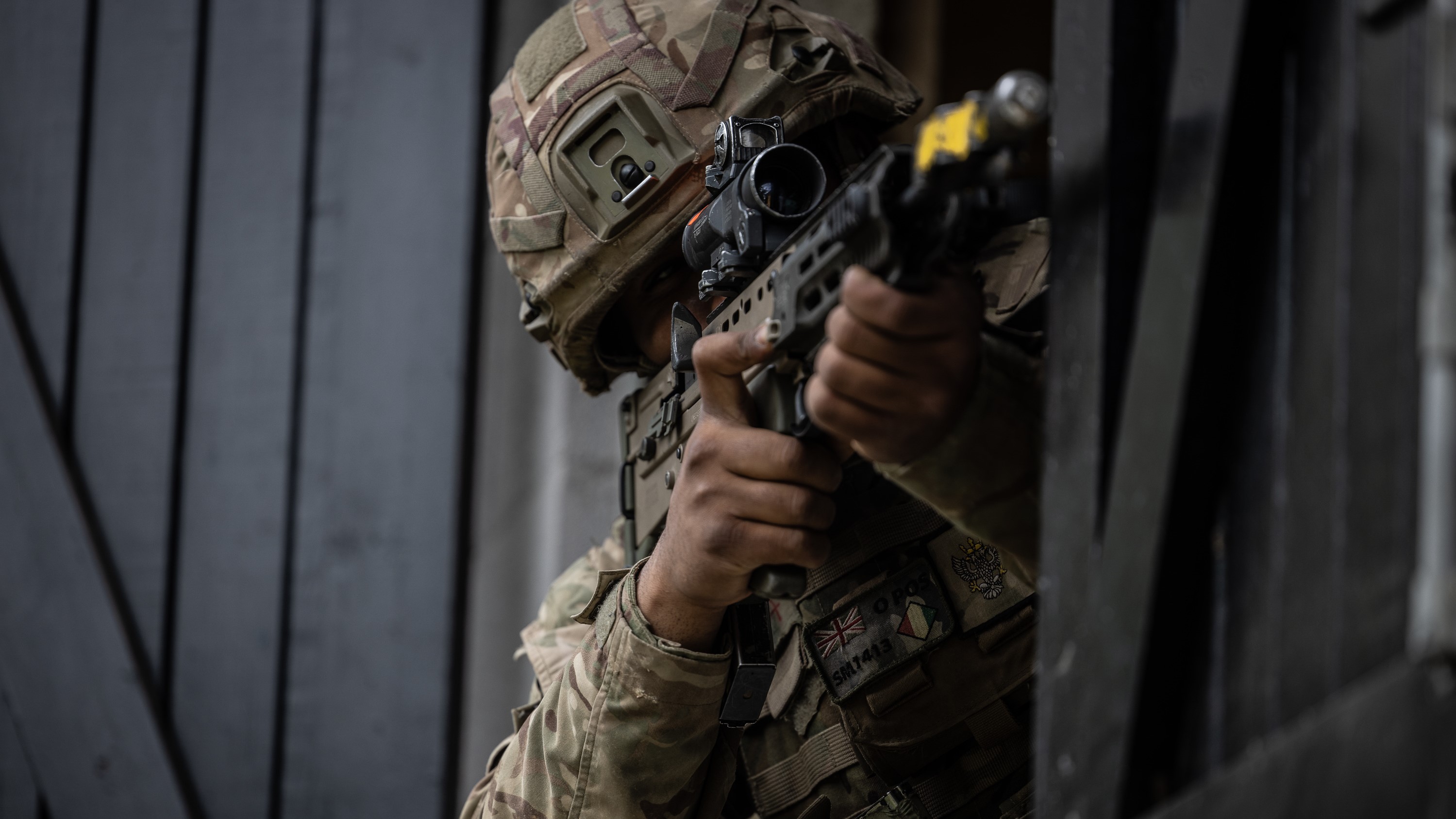
UK soldiers test body-worn tech capable of thermal detection and drone control

British Army troops have been testing the next generation of body-worn technology, including lasers, ground sensors and drone-controlling wearables.
Integrating available technology into wearable tech is the aim of the trial, with advanced battlefield awareness allowing for faster tactical decision-making.
Troops from 2nd Battalion, the Royal Anglian Regiment tested the cutting-edge system, with the trial conducted by Defence Science and Technology Laboratory (Dstl) scientists.
Some of the kit involved was:
- A helmet-mounted strobe alert system to identify friendly or enemy forces
- An electronic system that emits an identifiable beacon when it detects an incoming laser
- Laser detection system to warn if enemies are targeting personnel
- A system that detects the wavelengths of incoming lasers and warns the user
- On-person drone control, giving the user the ability to control and pre-programme drones
- Drone thermal detection to aid enemy detection
- A device on the weapon capable of calculating the range of an object/target
- Advanced digital day and night optics for weapons
- Smart hub – the 'brain' of the integrated power and data supply for all digital devices
- Mesh network – a type of radio configuration that permits 'hopping' from one soldier's radio to another to enhance range
- Ground sensors to detect movement with alerts sent to body-worn systems
The digital system being used in the trials is standardised and allows for a customised control that can be tailored for each mission.
Jon Russell, Dstl's senior principal scientist on the research, said the technology will "protect the lives of our Armed Forces by improving operational capability… giving them the advantage over the enemy".
"It is great to see the Future Integrated Dismounted Soldier Vision is clearly proving how a soldier system containing multiple knowledge capabilities that are designed to combine crucial data to improve operational advantage," he said.
"Our aim is to develop the most capable Armed Forces in the world, by merging different technologies to advance battlefield awareness."
The MOD said decision-making is improved as a result of the tech.
This can include increasing the tempo of battle, allowing British troops to out-think the enemy and allow them to make quicker decisions, and increasing situational awareness – allowing troops to make better decisions based on a real-time picture.
Decision-making is also enhanced by the tech due to the ability to send data, like images and full-motion video, from the soldier to wider teams.
Defence Procurement Minister Maria Eagle said the Government was clear in its "commitment to advancing technology that ensures the safety and superiority of UK Armed Forces".
"This cutting-edge technology will bolster operational lethality and elevate battlefield awareness," she said.
"I welcome the continued collaboration between government, industry, and scientists on this innovative programme."
The next phase in the trials will include vehicle-mounted options and the development of a joint soldier system with UK allies.









